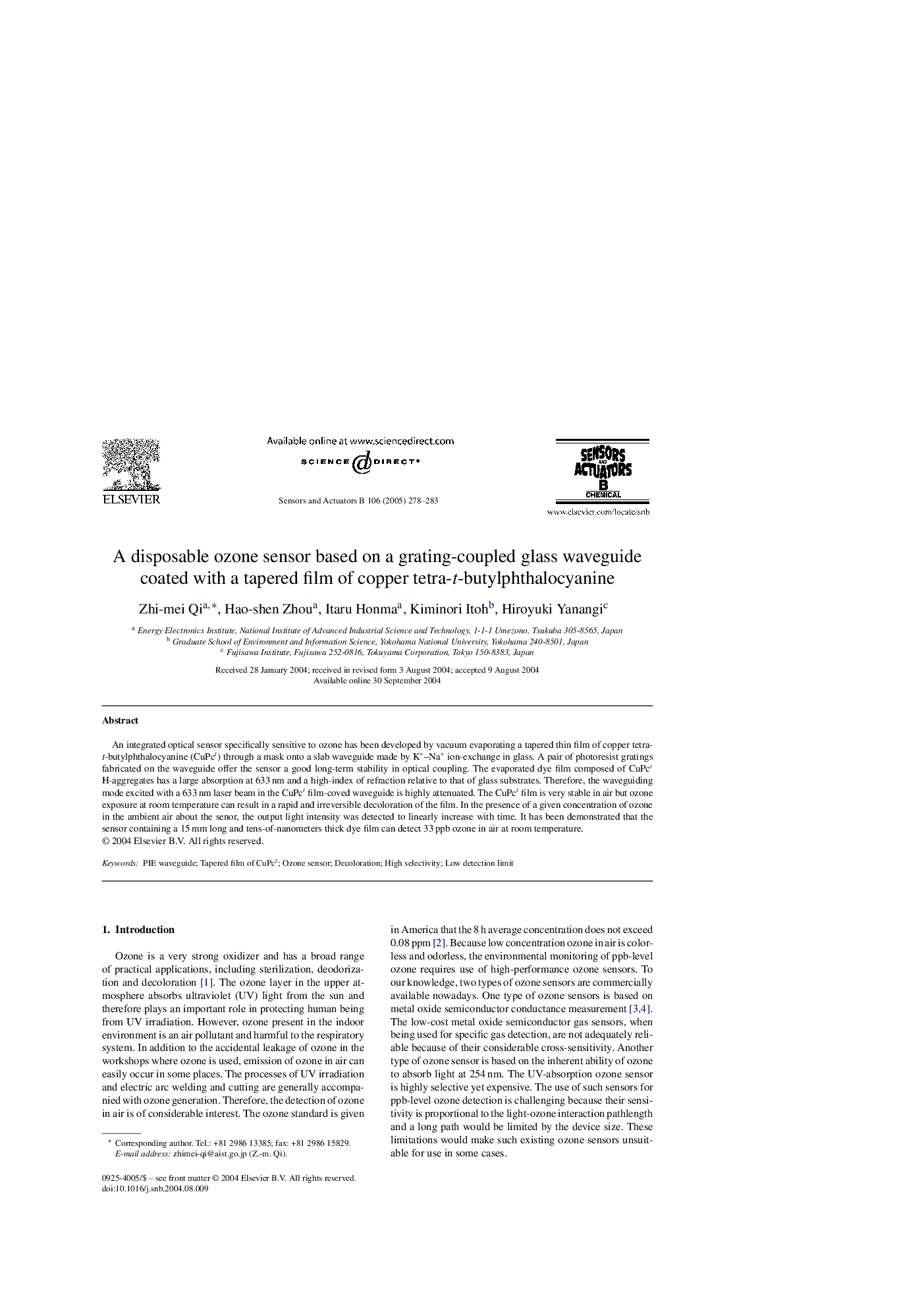| Article ID | Journal | Published Year | Pages | File Type |
|---|---|---|---|---|
| 10410430 | Sensors and Actuators B: Chemical | 2005 | 6 Pages |
Abstract
An integrated optical sensor specifically sensitive to ozone has been developed by vacuum evaporating a tapered thin film of copper tetra-t-butylphthalocyanine (CuPct) through a mask onto a slab waveguide made by K+-Na+ ion-exchange in glass. A pair of photoresist gratings fabricated on the waveguide offer the sensor a good long-term stability in optical coupling. The evaporated dye film composed of CuPct H-aggregates has a large absorption at 633Â nm and a high-index of refraction relative to that of glass substrates. Therefore, the waveguiding mode excited with a 633Â nm laser beam in the CuPct film-coved waveguide is highly attenuated. The CuPct film is very stable in air but ozone exposure at room temperature can result in a rapid and irreversible decoloration of the film. In the presence of a given concentration of ozone in the ambient air about the senor, the output light intensity was detected to linearly increase with time. It has been demonstrated that the sensor containing a 15Â mm long and tens-of-nanometers thick dye film can detect 33Â ppb ozone in air at room temperature.
Related Topics
Physical Sciences and Engineering
Chemistry
Analytical Chemistry
Authors
Zhi-mei Qi, Hao-shen Zhou, Itaru Honma, Kiminori Itoh, Hiroyuki Yanangi,
